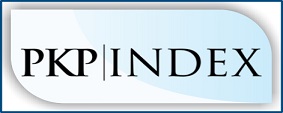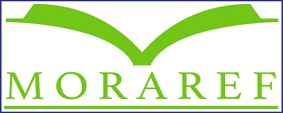EFFECT OF RINSED WITH Psidium guajava LINN LEAVES DECOCTION ON PLAQUE INDEX AND SALIVARY pH ON STUDENTS OF SMPN 29 PALEMBANG
DOI:
https://doi.org/10.31004/prepotif.v5i2.2236Keywords:
plaque index, Psidium guajava leaves Linn decoction, salivary pHAbstract
Background: Dental plaque is a structurally and functionally organized biofilm. Caries is a disease that caused by acids from bacterial metabolism. Psidium guajava Linn leaves decoction contains flavonoid, tannin, and saponin that can reduce plaque accumulation and phosphate that can neutralize salivary pH. The aim of this study was to evaluate the effect of rinsed with Psidium guajava Linn leaves decoction on plaque index and salivary pH. Method: This experimental research was done with pretest and posttest control group design involving 102 students of SMPN 29 Palembang. Subjects were divided into 3 groups, group I (Psidium guajava Linn leaves decoction), group II (chlorhexidine 0,06%), group III (distilled water). Subjects were instructed to rinse with 10 ml of mouthrinse twice a day for 7 days. At baseline and 7 days plaque was assessed using Turesky-Gilmore-Glickman modification of Quigley Hein index. Saliva was collected with spitting method and salivary pH was measured with digital pH at baseline and 7 days. Data was analyzed with paired t-test, one way ANOVA, Wilcoxon, and Kruskal-Wallis. Result: There was a significant decrease in plaque index and a significant increase in salivary pH on group I (p<0,05). The mean difference of plaque index on group I was significantly higher than group III and lower than group II (p<0,05). The mean difference of salivary pH on group I was significantly higher than group III (p<0,05). Conclusion: Rinsed with Psidium guajava Linn leaves decoction can decrease plaque index and increase salivary pH. Keywords: plaque index, Psidium guajava leaves Linn decoction, salivary pHReferences
Badan Penelitian dan Pengembangan Kesehatan Departemen Kesehatan Republik Indonesia. Laporan hasil riset kesehatan dasar (Riskesdas) 2013. Jakarta: Badan Penelitian dan Pengembangan Kesehatan Departemen Kesehatan Republik Indonesia. 2013;118.
I Struzycka. The oral microbiome in dental caries. Pol J Microbiol. 2014; 63(2): 127-135.
Kumar B, Kashyap N, Anivnash A, Chevvuri R, Sagar MK, Shrikant K. The composition, function and role of saliva in maintaining oral health: a review. JCDP. 2017;4(2):266-73.
Gold JA. The role of chlorhexidine in caries prevention. Operative Dentistry. 2008;33(6):710-716.
Varoni E, Tarce M, Lodi G, Carrasi A. Chlorhexidine (CHX) in dentistry: state of the art. Minerva Stomatol. 2012;61(9):399-419.
Parimin SP. 2005. Jambu biji budidaya. 1stEd. Bogor: Niaga Swadaya.7-8.
Hadiati S, Apriyanti LH. 2015. Bertanam jambu biji di pekarangan. 1st Ed. Jakarta: Agriflo. 10-1.
Gutierrez RMP, Mitchell S, Solis RV. Psidium guajava: a review of its traditional uses, phytochemistry and pharmacology. J Ethnopharmacol. 2008; 117:1-27.
Joseph L, George M, Singh G, Mathews P. Phytochemical investigation on various parts of Psidium guajava. Annals of Plant Sciences. 2016:1265-8.
Animireddy D, Bekkem VTR, Vallala P, Kotha SB, Ankireddy S. Noorjahan M. Evaluation of pH, buffering capacity, viscosity and flow rate levels on saliva in caries-free, minimal caries and nursing caries children: An in vivo study. ContempClin Dent. 2014; 5(3):324-8.
Ghasemzadeh A, Ghasemzadeh N. Flavonoids and phenolic acids: Role and biochemical activity in plants and human. J Med Plants Res. 2011; 5(31): 6697-6703.
Mailos MN, Mahendradatta M, Laga A, Djide N. Antimicrobial activities of tannins extract from guava leaves (Psidiumguajava L) on pathogens microbial. International Journal of Scientific and Technology Research. 2014;3(1):2277-8616.
Godstime O, Felix E, Augustina J, Christoper E. Mechanism of antimicrobial actions of phytochemicals against enteric pathogens – a review. J Pharm ChemBiol Sci. 2014; 2(2): 77-85.
Mehta VV, Rajesh G, Rao A, Shenoy R, Pai M. Antimicrobial efficacy of Punica granatum mesocarp, Nelumbo nucifera leaf, Psidium guajava leaf and Coffea canephora extract on common oral pathogens: an in-vitro study. J Clin Diagn Res. 2014;8(7):65-8.
Chuku EC. Proximate composition of guava leaves (PsidiumguajavaL) and associated field fungi. Niger J Mycol. 2009;2(1):65-70.
Dehghani M, Abtahi M, Sadeghian H, Shafee H, Tanbakuchi B. Combined chlorhexidine-sodiumfluoridemouthrinse for orthodontic patients: clinical and microbiological study. J Clint Exp Dent. 2015;7(5):569-75.
Shin A, Nam S. The effects of various mouthwashes on the oral environment change for oral health care. Biomedical Research. 2018; 29(8): 29-52.
Nair AA, Malaiappan S. The comparison of the antiplaque effect of aloe vera, chlorhexidine and placebo mouth washes on gingivitis patients. J Pharm Sci Res. 2016; 8(11): 295-300.
Shin A, Nam S. The effects of various mouthwashes on the oral environment change for oral health care. Biomedical Research. 2018; 29(8): 29-52.
Downloads
Published
How to Cite
Issue
Section
License
Copyright (c) 2021 Claudine Radot Pamela Boru Tambunan

This work is licensed under a Creative Commons Attribution-ShareAlike 4.0 International License.
Authors who publish with this journal agree to the following terms:
- Authors retain copyright and grant the journal right of first publication with the work simultaneously licensed under a Creative Commons Attribution License that allows others to share the work with an acknowledgement of the work’s authorship and initial publication in this journal.
- Authors are able to enter into separate, additional contractual arrangements for the non-exclusive distribution of the journal’s published version of the work (e.g., post it to an institutional repository or publish it in a book), with an acknowledgement of its initial publication in this journal.
- Authors are permitted and encouraged to post their work online (e.g., in institutional repositories or on their website) prior to and during the submission process, as it can lead to productive exchanges, as well as earlier and greater citation of published work (See The Effect of Open Access).











